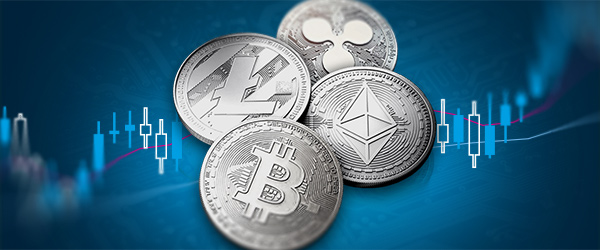เว็บไซต์หลอกลวงที่แอบอ้างว่ามีความเกี่ยวข้องกับ JFD
โปรดระวังเว็บไซต์
หลอกลวงที่สวมรอยเป็น บริษัท ในเครือและ / หรือคู่สัญญาของ JFD

Has Gold Peaked? Seven Reasons Why It Might Have
Has Gold Peaked? Seven Reasons Why It Might Have
Some Considerations Amid Highly Volatile Global Markets
Recently, we discussed the possibility of gold resuming its upward trajectory, with a potential push toward the $3,000 mark. However, here I want to highlight some factors that could argue against a sustained rally.
Since then, gold has risen from $2,830 back to $2,920.
But now, there are signs that the rally is losing momentum. Gold has repeatedly failed to break through the $2,950 level in a sustainable way. Initially, I thought a move toward $3,000 was possible, but that now seems increasingly unlikely. Even if it does reach that level, the risk-reward ratio is not particularly attractive.
Changes in Fundamental Factors
Even more important than the technical picture is the gradual shift in fundamental conditions for gold. Here are seven factors that could limit further upside:
1️⃣ The End of the Ukraine War
The war is winding down, and one of the few predictable things about Trump is his aversion to military conflicts. A more stable geopolitical environment could reduce gold’s appeal as a crisis hedge.
2️⃣ Is Inflation Making a Comeback?
The U.S. Federal Reserve (Fed) is losing its urgency to cut interest rates. If inflation stabilizes or starts rising again, this could shake up financial markets. While there is no perfect historical correlation between gold and inflation, a more hawkish Fed could trigger a broader risk-off movement, negatively affecting gold.
3️⃣ Bitcoin Has Dropped 20%
Bitcoin is in a correction phase. Gold and Bitcoin sometimes compete for capital, and gold has benefited from Bitcoin’s weakness recently. However, in the long run, both assets often move in the same direction, which presents a risk for gold if Bitcoin stabilizes.
4️⃣ Trump’s Tariff Policies Have Disappointed
After the election, there was speculation that Trump would pursue an aggressive trade policy with high tariffs, potentially driving gold prices higher. So far, however, he has only imposed 10% tariffs on China, and markets are no longer taking his threats as seriously. If no further tariffs are introduced, a key bullish driver for gold may disappear.
5️⃣ Chinese Investors May Be Shifting Focus
A significant part of the gold rally over the past two years was likely driven by Chinese investors seeking safe-haven assets amid a real estate crash and weak stock markets. However, China’s stock market is now rebounding, and if the upcoming National People’s Congress announces new stimulus measures, capital may flow out of gold and back into equities.
6️⃣ The Return of Fiscal Discipline?
My base-case scenario (with 80% probability) is that the U.S. Congress extends Trump’s tax cuts and continues running large deficits. However, there is a small chance that fiscal hawks gain influence and push for spending cuts. While this could create short-term economic turbulence, it would stabilize U.S. finances in the long run – a bearish scenario for gold.
7️⃣ The Seasonal Gold Rally Is Over
Once again, this was a textbook seasonal trade. Gold follows a strong historical pattern, with its rally typically ending in late February. I will consider re-entering this trade next December, but for now, the seasonal tailwind has faded.
Are There Still Bullish Arguments for Gold?
Of course, there are counterarguments: If new tariffs are introduced, the U.S. dollar weakens further, or China’s recent stock market rebound turns out to be short-lived, gold could regain strength. However, for now, the risks of a correction outweigh the upside potential.
-------------------------------------------------------------
Disclaimer:
The content we produce does not constitute investment advice or investment recommendation (should not be considered as such) and does not in any way constitute an invitation to acquire any financial instrument or product. The Group of Companies of JFD, its affiliates, agents, directors, officers or employees are not liable for any damages that may be caused by individual comments or statements by JFD analysts and assumes no liability with respect to the completeness and correctness of the content presented. The investor is solely responsible for the risk of his investment decisions. Accordingly, you should seek, if you consider appropriate, relevant independent professional advice on the investment considered. The analyses and comments presented do not include any consideration of your personal investment objectives, financial circumstances or needs. The content has not been prepared in accordance with the legal requirements for financial analyses and must therefore be viewed by the reader as marketing information. JFD prohibits the duplication or publication without explicit approval.
There are risks involved with trading of cash equities. Past performance is not indicative of future results. You should consider whether you can tolerate such losses before trading. Please read the full Risk Disclosure (https://www.jfdbrokers.com/en/legal/risk-disclosure).
Copyright 2024 JFD Group Ltd.


 Marcus Klebe
Marcus Klebe








